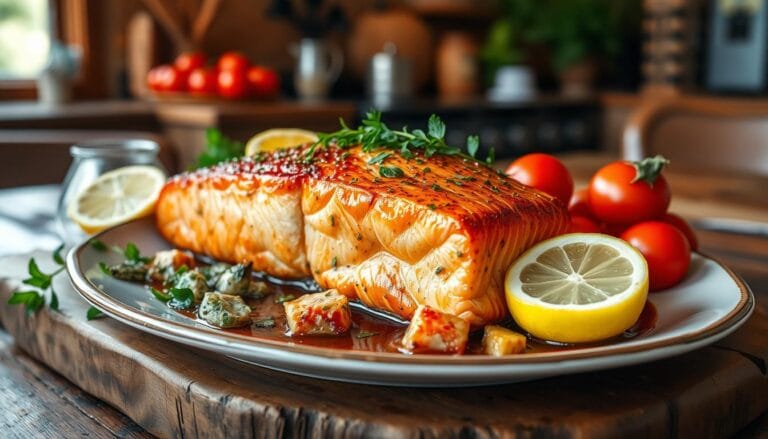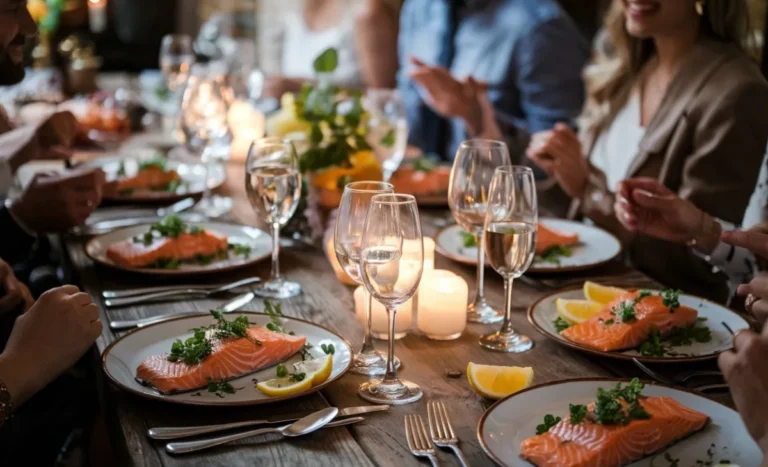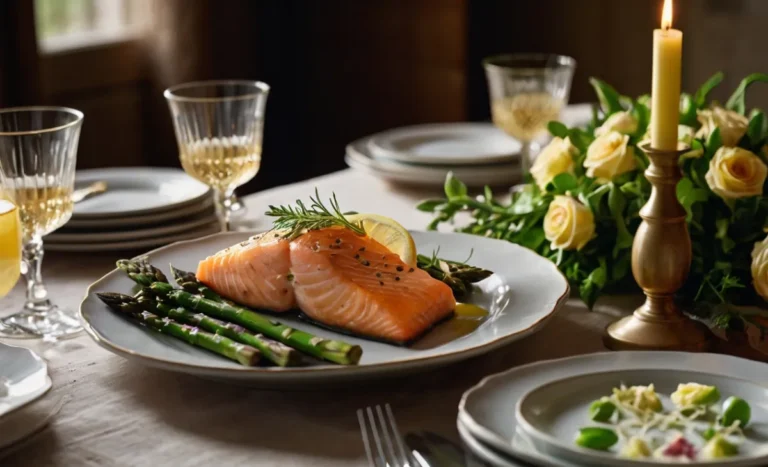How to Perfectly Grill a 1 lb Salmon Steak: A Step-by-Step Guide for Beginners
Choosing the Right 1 lb Salmon Steak
Choosing the right 1 lb salmon steak is the first step toward grilling success. The quality of the salmon you select directly affects the flavor and texture of your final dish. When shopping, look for steaks that are vibrant in color, as this indicates freshness. Fresh salmon should also have a mild scent, not a strong fishy odor, which can signal spoilage.
When deciding between wild-caught and farm-raised salmon, consider your flavor preferences. Wild-caught salmon tends to have a firmer texture and a richer taste, while farm-raised varieties are milder and often more affordable. Each option brings its unique benefits, so choose based on your needs and budget.
Pay attention to the thickness of the 1 lb salmon steak as well. Ideally, you want a steak that is at least an inch thick to ensure even cooking on the grill. Thinner cuts may cook too quickly and dry out, while thicker cuts can leave you with an undercooked center.
Lastly, check the skin on the salmon steak. Opt for a piece with the skin still intact, as it helps retain moisture during grilling. The skin also crisps up beautifully on the grill, adding both texture and flavor to your dish.
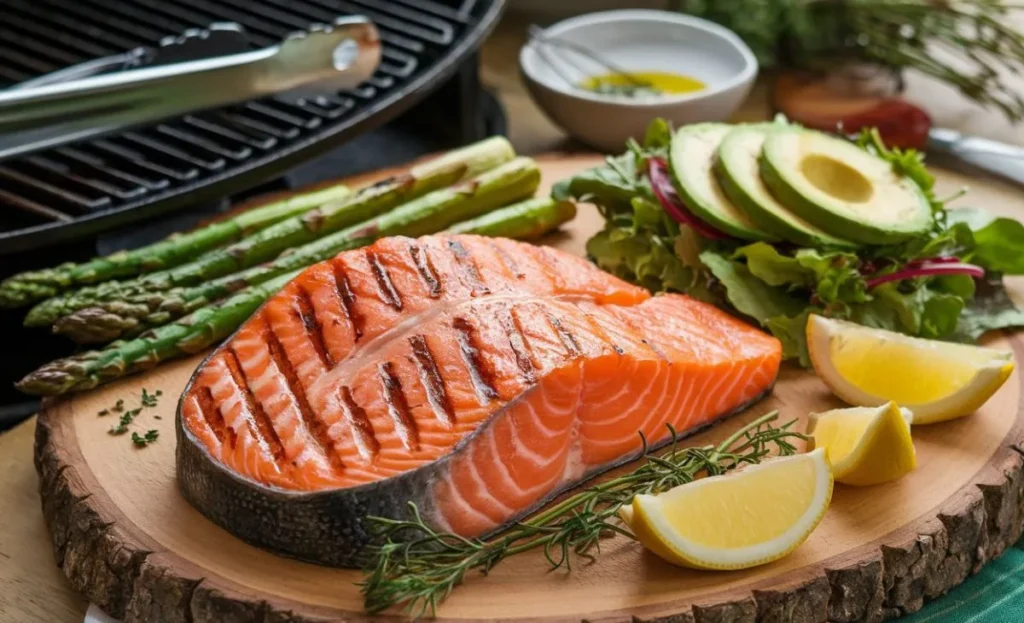
Preparing Your Grill for Salmon
Preparing your grill correctly is essential for perfectly cooking a 1 lb salmon steak. A properly heated and clean grill ensures even cooking and prevents the fish from sticking. Before you begin grilling, make sure your grill is prepped and ready for a smooth cooking experience. This will help enhance the flavor of your salmon.
Start by preheating the grill to medium-high heat, around 375-400°F. Preheating is crucial because it allows the salmon to cook evenly and develop a nice sear. If the grill is too cold, your 1 lb salmon steak may stick, and the cooking time will be inconsistent. Proper heat ensures that the salmon cooks through without drying out.
Next, clean your grill grates thoroughly. Residue from previous grilling sessions can cause sticking and transfer unwanted flavors. Use a wire brush to scrub the grates clean, and once they’re spotless, lightly oil them. Oiling the grates creates a non-stick surface, making it easier to flip your salmon and achieve those beautiful grill marks.
Lastly, consider using indirect heat if you’re grilling thicker cuts of salmon. This technique allows you to cook the fish evenly without over-charring the outside. For a 1 lb salmon steak, start by searing it over direct heat for a few minutes, then move it to a cooler part of the grill to finish cooking. This method locks in moisture and enhances flavor.
Essential Ingredients and Seasoning for Salmon Steak
Choosing the right ingredients and seasoning is key to enhancing the natural flavor of a 1 lb salmon steak. The simplicity of the ingredients allows the salmon’s rich, buttery texture to shine while adding subtle layers of flavor. Whether you prefer bold spices or a more delicate seasoning, selecting the best ingredients makes all the difference when grilling salmon.
Start with high-quality olive oil as a base. A light coating of olive oil helps keep the salmon moist while grilling and prevents it from sticking to the grates. This essential ingredient also adds a touch of richness without overpowering the natural taste of the 1 lb salmon steak. Olive oil works well as a neutral base for any additional seasoning you choose.
For seasoning, classic combinations like salt, pepper, and garlic offer a balanced flavor that complements the salmon. Freshly cracked black pepper adds a bit of heat, while garlic brings a robust aroma to the dish. Adding a pinch of sea salt enhances the salmon’s flavor without overwhelming its natural qualities. You can also experiment with herbs like dill or parsley for a fresh, bright contrast to the salmon’s rich texture.
Lastly, consider adding a citrus element, such as lemon or lime, to brighten up the dish. A squeeze of fresh lemon juice just before grilling can cut through the richness of the 1 lb salmon steak, adding a tangy zest that balances the flavors. Citrus pairs beautifully with salmon, making it a simple yet effective ingredient for grilling perfection.
Step-by-Step Grilling Instructions
Grilling a 1 lb salmon steak to perfection is easier than you think! By following a few simple steps, you can achieve a beautifully cooked steak with a crispy exterior and tender, juicy center. Whether you’re a beginner or an experienced cook, this step-by-step guide will help you grill salmon like a pro. Let’s dive into the process and bring out the best in your 1 lb salmon steak.

Ingredients:
- 1 lb salmon steak
- 2 tbsp olive oil
- 1 tsp sea salt
- 1/2 tsp freshly ground black pepper
- 1 clove garlic, minced
- 1 lemon (for juice and garnish)
- Fresh herbs (optional)
Step-by-Step Grilling Instructions:
1. Preheat the Grill
Begin by preheating your grill to medium-high heat (375-400°F). This ensures that your 1 lb salmon steak cooks evenly. Preheating is crucial for achieving a nice sear on the outside without overcooking the inside.
2. Prepare the Salmon
While the grill heats, brush your salmon steak with olive oil to prevent sticking. Season both sides with sea salt, freshly ground black pepper, and minced garlic. For extra flavor, squeeze fresh lemon juice over the steak.
3. Start Grilling
Place the salmon steak on the grill, skin-side down. Cook for 4-5 minutes without flipping, allowing the skin to get crispy. The fish should lift easily off the grill when it’s ready to flip.
4. Flip and Finish
Carefully flip the steak using a spatula. Cook for another 3-4 minutes on the other side. The internal temperature should reach 145°F, and the flesh should easily flake with a fork.
5. Serve and Enjoy!
Remove the salmon from the grill, garnish with fresh lemon slices and herbs if desired. Serve immediately and enjoy your perfectly grilled 1 lb salmon steak!
Grilling Time and Temperature Guidelines
Grilling time and temperature are crucial factors when cooking a 1 lb salmon steak. Getting these details right ensures your salmon turns out moist and flavorful without being overcooked. By following the right temperature guidelines, you can achieve a perfectly cooked salmon every time. Whether you prefer your salmon slightly rare or fully cooked, understanding these key factors will help.
For optimal results, preheat your grill to medium-high heat, between 375-400°F. This temperature allows the 1 lb salmon steak to cook evenly while creating a beautiful sear. If the grill is too hot, the outside may char before the inside cooks through. Conversely, a grill that’s too cool can leave your salmon undercooked or dry.
When it comes to grilling time, it’s essential to cook the salmon for about 4-6 minutes per side. A general rule is to grill the salmon for 8-10 minutes per inch of thickness. For a 1 lb salmon steak, this guideline helps ensure that it reaches the ideal internal temperature of 145°F. Keep a close eye on the salmon to avoid overcooking, which can make it tough and dry.
Using a meat thermometer is highly recommended to check for doneness. Insert the thermometer into the thickest part of the salmon to ensure it reaches 145°F. If you don’t have a thermometer, you can also check by gently pressing the flesh with a fork; it should flake easily when fully cooked.
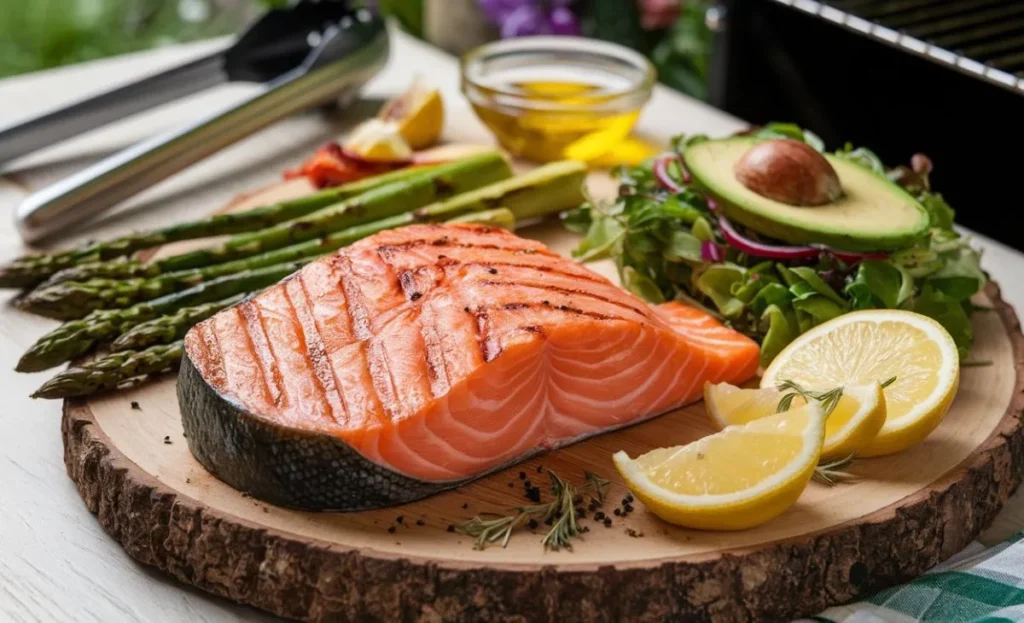
How to Check for Doneness
Knowing how to check for doneness is essential when grilling a 1 lb salmon steak. Cooking salmon to perfection means balancing a tender, flaky interior with a slightly crispy exterior. Overcooking can dry out the salmon, while undercooking may leave the center raw. By following a few simple methods, you can ensure your salmon is cooked just right.
One of the easiest ways to check for doneness is by using a meat thermometer. Insert it into the thickest part of the 1 lb salmon steak. For perfectly cooked salmon, the internal temperature should reach 145°F. This method provides an accurate reading and ensures your salmon is cooked safely and evenly.
If you don’t have a thermometer, you can use the “flake test.” Gently press the salmon with a fork at the thickest point. If the flesh flakes easily and separates along the natural lines of the fish, your 1 lb salmon steak is done. However, the center should still have a slightly translucent color to ensure the salmon is not overcooked.
Another method is to observe the color change as it cooks. The salmon will turn from a bright, translucent pink to a more opaque light pink. You can also check the edges; if they are firm and pulling slightly away from the grill, the salmon is likely done. Using these methods together ensures your salmon is grilled to perfection.
Serving Suggestions and Pairings
After grilling a 1 lb salmon steak to perfection, it’s time to think about serving suggestions and pairings that will elevate your meal. Salmon is incredibly versatile, making it easy to pair with a variety of sides and flavors. Whether you prefer light, fresh accompaniments or hearty sides, the right pairing can enhance your dining experience. Let’s explore some ideas that complement your grilled salmon.
For a refreshing side, consider serving your 1 lb salmon steak with a crisp, citrusy salad. A mix of greens, avocado, and a lemon vinaigrette will balance the richness of the salmon. The acidity from the lemon brightens the flavors, while the avocado adds a creamy texture that complements the tender fish. This pairing keeps the meal light and healthy, perfect for a summer evening.
If you’re craving something more substantial, grilled vegetables are an excellent option. Vegetables like asparagus, zucchini, or bell peppers pair wonderfully with salmon. Their smoky, charred flavors from the grill match the seared salmon, creating a harmonious dish. Drizzle some olive oil and sprinkle sea salt over the vegetables for an easy, flavorful side.
For those who enjoy hearty pairings, consider serving your 1 lb salmon steak with a side of garlic mashed potatoes or quinoa. These starchy sides provide a satisfying contrast to the delicate texture of the salmon. Additionally, you can garnish the dish with fresh herbs like dill or parsley, adding a burst of freshness to complete the meal.
How to Make Delicious Keto Cottage Cheese Dip Recipes for Your Low-Carb Diet



